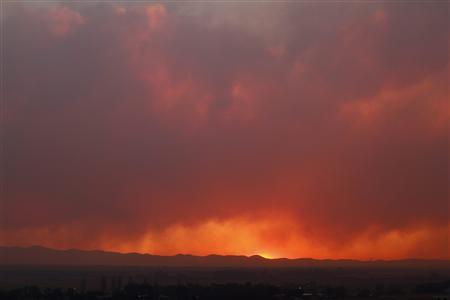Thanks to Matthew Koehler for this op-ed from the ABQ Journal.
Lack of Logging Isn’t To Blame in Massive Forest Fires
By Bryan Bird / Wild Places Program Director, WildEarth Guardians on Fri, Jun 24, 2011
As the country floods and burns, climate change is upon us. Smoke from the Wallow Fire in Arizona still lingers, and the predictable but misplaced finger-pointing has begun.
As the grandstanding goes on, however, innovative, collaborative efforts are quietly reshaping the federal forest policies that got us here in the first place and charting a sustainable future for the National Forest System.
Contrary to public perception, there have been few lawsuits challenging sensible fuel reduction on the national forests in the last decade. The GAO concluded in 2010 that about 2 percent of all hazardous fuel reduction decisions by the Forest Service nationwide were litigated. The handful challenged were because of unwarranted impacts to water, wildlife and other valuable resources the national forests generate for Americans.
Ignored in the national discourse: the U.S. Forest Service, loggers, the wood utilization industry and conservationists have been spending valuable time and resources in the woods finding a zone of agreement.
We need to go back more than a couple of decades to understand how the current wildfire situation arose.
During the last hundred years or so the lower elevation, dry pine forests of the west were severely logged over, leaving a nearly uniform mass of small trees. Domestic livestock grazing, which suppresses the grasses that normally carry low intensity fire fostered the proliferation of pine seedlings and aggravated conditions. On top of it all, humans became extremely effective at suppressing most wildfires, leaving the overgrowth unchecked.
Cutting itself out of business, the lumber industry is mostly gone and the market for lumber is at record low. Supposing we threw aside all environmental concerns and opened our public forestlands to logging on a historic scale, as some have suggested, there would be no use for the logs. In a free market system there has to be demand or no amount of deregulation is going to make a difference.
Throw in climate change and drought and you have all the ingredients for the Wallow Fire and others burning in the Southwest. The science is clear; big fire years track drought cycles, and climate change is exacerbating those conditions.
The fires are predictable, but can we do anything to mitigate their effect? Yes, we can.
Starting in 2001 with Sen. Jeff Bingaman’s Collaborative Forest Restoration Program in New Mexico, now expanded nationally, former adversaries began developing forest restoration projects that are environmentally sound and effective. In New Mexico alone, more than 30,000 acres have been treated and about 600 jobs created through the program.
More important, perhaps, are the program’s less quantifiable results, as an atmosphere of litigation and acrimony surrounding resources has given way to a spirit of cooperation.
Logging in the historic sense will leave the forests more vulnerable, not less. On federal, public forests, cost-effective fuel reduction is accomplished with other tools including: wildland fire use, prescribed fire, thinning and removal of livestock grazing pressure.
The Forest Service treated hazardous fuels on one and a half million acres with thinning or burning in 2010; many of these acres are strategically located around communities and proved critical in defending Arizona towns in the latest blaze.
Senators John Kyle of Arizona and Ron Wyden of Oregon told a senate committee recently that the Forest Service needs to pick up the pace of hazardous fuel treatments on the national forests. While that is true and the Collaborative Forest Landscape Restoration Program requires full funding, we live in time of shrinking budgets and the acute effects of climate change. Strategic use of resources will be critical.
In addition to forest fuel treatments, it is time to start taking personal responsibility, demanding appropriate county zoning and placing the enormous costs of fire fighting on the parties that encourage development in fire-prone forests.
That is the real work of preparing for wildfire in a climate-changed world.










